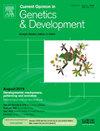To splice or not to splice: pseudoexons in neurological disease and opportunities for intervention
IF 3.6
2区 生物学
Q2 CELL BIOLOGY
引用次数: 0
Abstract
Accurate exon selection and processing of pre-messenger RNA are crucial for normal gene expression. Mutations that alter splicing disrupt pre-mRNA processing and can have diverse effects on transcript structure, making the consequences of many such mutations difficult to predict. While next-generation sequencing technologies have transformed genetic diagnosis for many patients, deep intronic variants generally evade detection and characterisation. Of all the known types of splicing mutations, the most elusive to predict are those that activate pseudoexons. Because transcripts that contain pseudoexons are otherwise generally intact, exclusion (or ‘skipping’) of the pseudoexon during processing of the pre-mRNA is likely to generate a normal, functional mRNA. Characterisation of pseudoexon mutations will open opportunities for the development of antisense oligonucleotide strategies to overcome these disease-causing mutations.
剪接或不剪接:神经系统疾病中的假外显子及其干预机会
准确的外显子选择和前信使RNA的加工对正常基因表达至关重要。改变剪接的突变会破坏前mrna的加工,并可能对转录本结构产生不同的影响,使得许多此类突变的后果难以预测。虽然下一代测序技术已经改变了许多患者的遗传诊断,但深层内含子变异通常逃避检测和表征。在所有已知的剪接突变类型中,最难以预测的是那些激活假外显子的剪接突变。由于含有假外显子的转录本通常是完整的,因此在预处理前mRNA过程中排除(或“跳过”)假外显子可能会产生正常的、功能性的mRNA。伪外显子突变的特征将为开发反义寡核苷酸策略来克服这些致病突变提供机会。
本文章由计算机程序翻译,如有差异,请以英文原文为准。
求助全文
约1分钟内获得全文
求助全文
来源期刊
CiteScore
7.90
自引率
0.00%
发文量
102
审稿时长
1 months
期刊介绍:
Current Opinion in Genetics and Development aims to stimulate scientifically grounded, interdisciplinary, multi-scale debate and exchange of ideas. It contains polished, concise and timely reviews and opinions, with particular emphasis on those articles published in the past two years. In addition to describing recent trends, the authors are encouraged to give their subjective opinion of the topics discussed.
In Current Opinion in Genetics and Development we help the reader by providing in a systematic manner:
1. The views of experts on current advances in their field in a clear and readable form.
2. Evaluations of the most interesting papers, annotated by experts, from the great wealth of original publications.[...]
The subject of Genetics and Development is divided into six themed sections, each of which is reviewed once a year:
• Cancer Genomics
• Genome Architecture and Expression
• Molecular and genetic basis of disease
• Developmental mechanisms, patterning and evolution
• Cell reprogramming, regeneration and repair
• Genetics of Human Origin / Evolutionary genetics (alternate years)

 求助内容:
求助内容: 应助结果提醒方式:
应助结果提醒方式:


